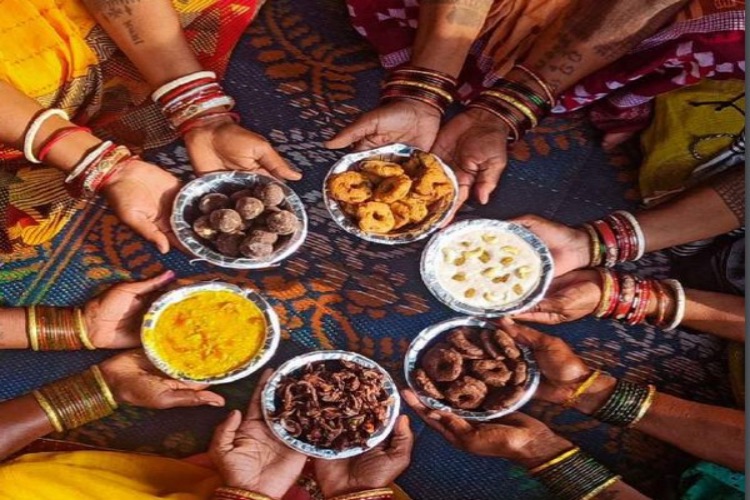
New Delhi
The area under cultivation of various millets in India has been declining and the underlying reasons behind it could be attributed to the promotion of rice and wheat vis-a-vis millet production and lack of suitable initiatives towards millets, a Niti Aayog report said.
The government think tank NITI Aayog released a report on Wednesday titled Promoting Millets in Diets: Best Practices across States, UTs of India. Millets which were once an integral part of the Indian diet have been almost forgotten due to various demand and supply challenges. India produces all the nine commonly known traditional millets viz. Sorghum, Pearl Millet, Finger Millet, Foxtail Millet, Proso Millet, Little Millet, Barnyard Millet, Brown top Millet and Kodo Millet.
Millets are also the most secure crops for small farmers as they are resilient and climate-adaptable in both hot and drought environments. Millets are nutritionally superior to other foodgrains owing to their higher protein levels and a more balanced amino acid profile. Millets also contain various phytochemicals which exert therapeutic properties owing to their anti-inflammatory and anti-oxidative properties.
"The reasons for the decline can be attributed to the promotion of rice and wheat vis-a-vis millet production and lack of suitable initiatives towards millets..." the Niti Aayog report stated.
"Despite the benefits of growing millets, over the years, Indian farmers have made a slow but steady shift in their cereal growing preferences away from millets," it further stated. "The total area of cropland harvesting the three major millet crops i.e. jowar, bajra and ragi grown in India has almost halved across the country since 1966," it said, adding thousands of hectares of land under millet production have shifted to other crops.
The Niti Aayog in its report also put out area, production, and crop yield data for some of the major millets during the 2010-11 to 2020-21 period. Data showed t area under cultivation (or acreage) for finger millet (ragi), small millets, pearl millet (Bajra), and Sorghum (Jowar) combined, declined from 19,055 hectares in 2010-11 to 13,633 hectares, with a decline of 3 per cent CAGR.
Their production declined from 19,996 tonnes to 18,020 tonnes per cent CAGR. However, yield per hectare rose over 2 per cent to 1,322 kg. "The low margins associated with millet production, vis-a-vis other crops, has created disincentives for millet farmers. The relatively shorter shelf life of the crops creates storage-related concerns and gives rise to risks of spoilage," the report said.
Further, it said changes in lifestyle and consumer tastes, coupled with the unavailability of ready-to-eat millets have contributed to lower demand. Considering the potential nutritional role of millets in public health, the central government declared millets as Nutri-Cereals in 2018 and celebrated the National Year of Millets in 2018.
The government of India under Prime Minister Narendra Modi spearheaded the United Nations General Assembly (UNGA) resolution for declaring the year 2023 as the International Year of Millets and the proposal of India was supported by 72 countries. India being the largest producer of millets and proposer of the International Year of Millets-2023, the Niti Aayog report called for a greater need for India to exercise the leadership in reviving millets through scaling up and replicating the millets value chain in other countries to leverage the emerging demand from global markets.
Recently, Union Agriculture Minister Narendra Singh Tomar has directed its agency National Agricultural Cooperative Marketing Federation of India (NAFED) to promote the 'International Year of Millets 2023' on a global scale. Accordingly, NAFED has started extending marketing linkage to millet-centric startups, setting up a millet corner in NAFED Bazaar Retail Stores, and installing of millet vending machines across Delhi NCR. Minister Tomar said all central ministries, and state governments including leading food and beverage industries, both public and private, should pitch in. India held its first mega-global event Global Millets (Shree Anna) Conference in Delhi to celebrate 2023 as the International Year of Millets (IYM).
The aim of the United Nations to declare 2023 as the International Year of Millets on India's initiative is to elevate awareness of millets for food security and nutrition, enhance investment in R&D and extension, and inspire stakeholders towards improving production, productivity and quality of millets.
A ministerial round table of millets was held post-inaugural session of the Global Millets (Shree Anna) Conference in New Delhi in March. Ministers from Guyana, Mauritius, Sri Lanka, Sudan, Suriname and Zambia; Permanent Secretary, Agriculture of Gambia and Maldives and Director General, Millets Initiative, Nigeria participated in the meeting.
